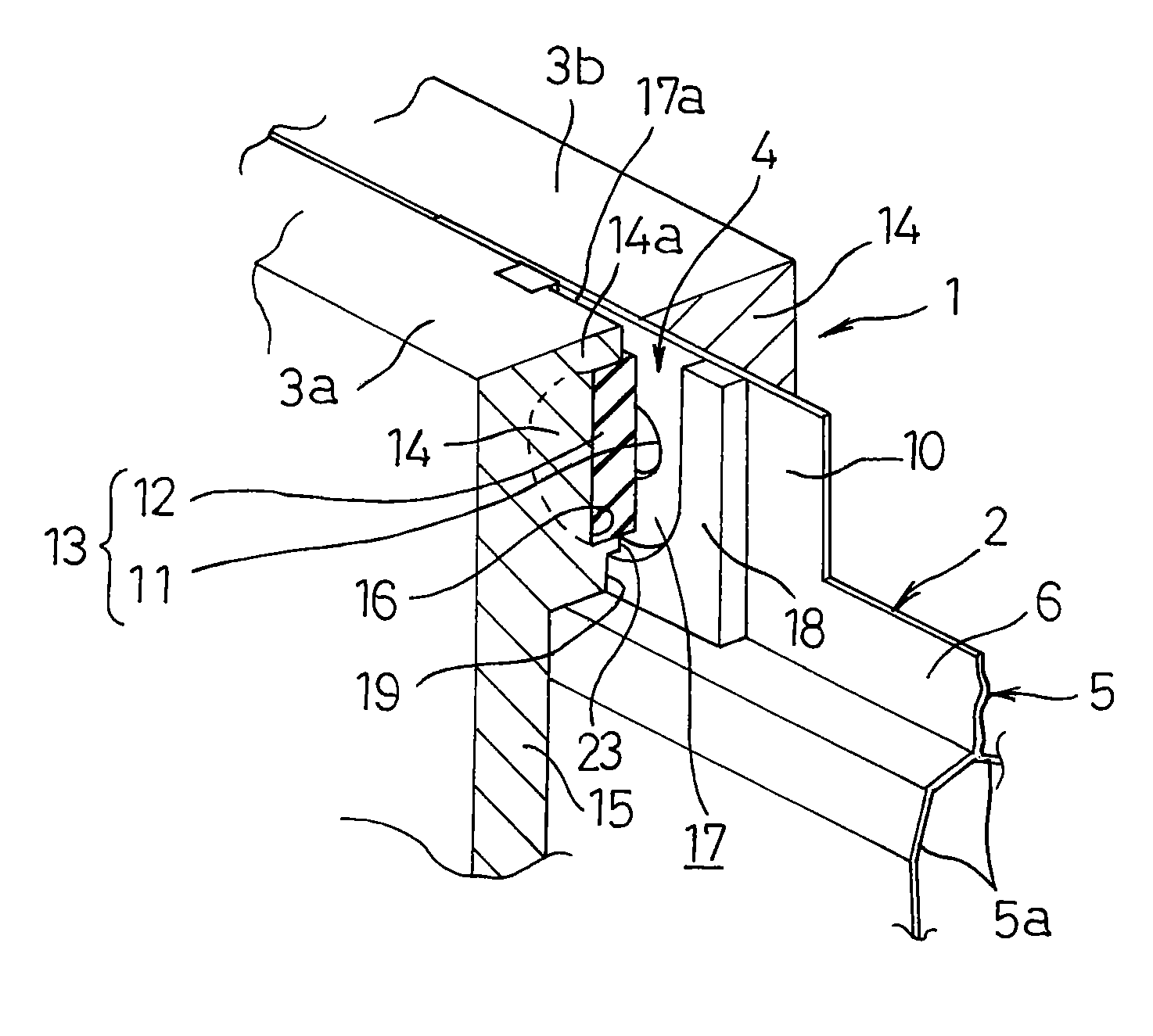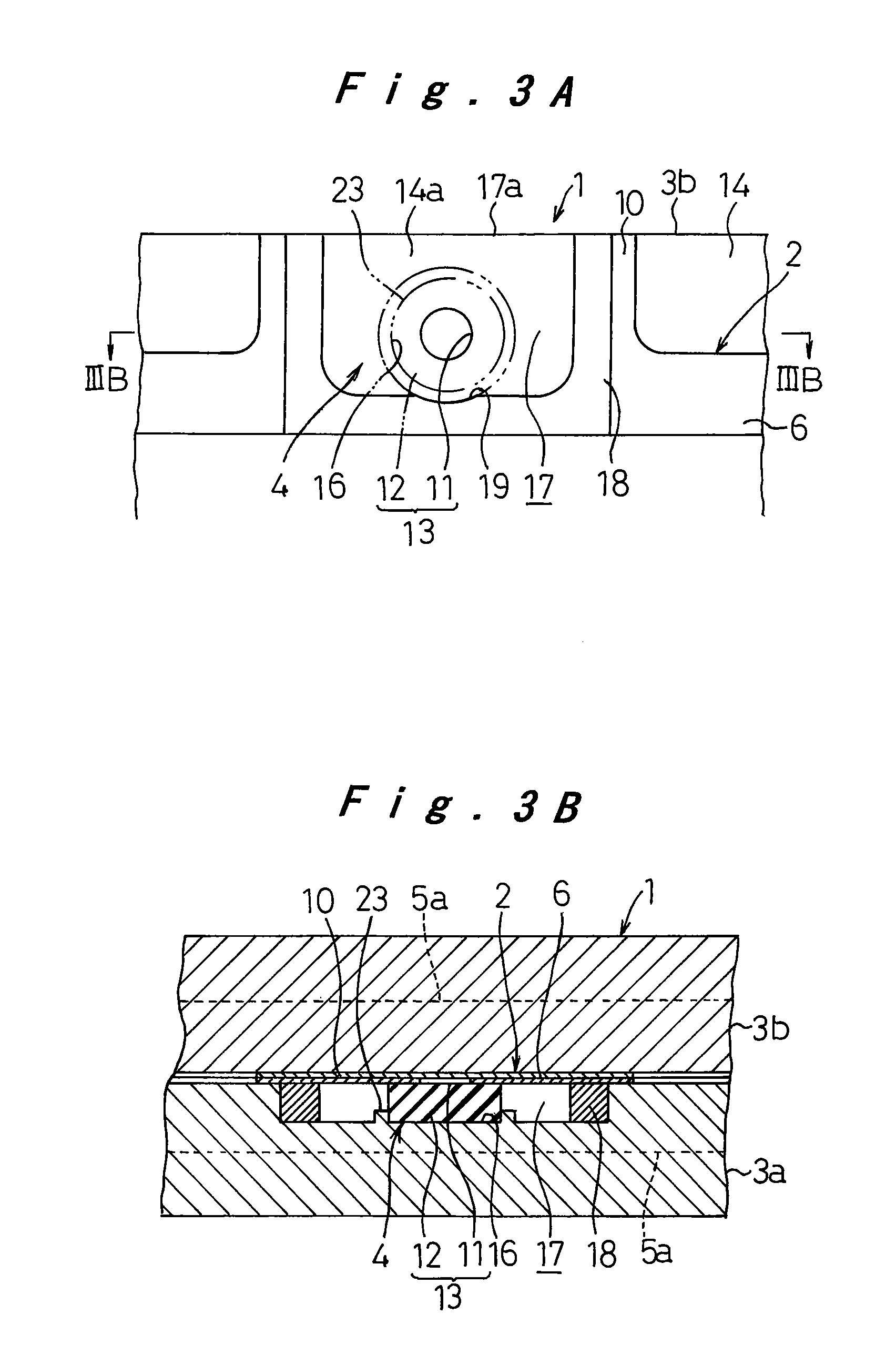Safety mechanism for liminate battery
a safety mechanism and laminate battery technology, applied in the direction of vent arrangement, cell components, grouping of flat cells, etc., can solve the problem of unthinkable application of such vents to laminate batteries, and achieve the effect of improving the safety features of the exterior case, preventing expansive deformation of laminate batteries, and improving the operation stability of the safety vents
- Summary
- Abstract
- Description
- Claims
- Application Information
AI Technical Summary
Benefits of technology
Problems solved by technology
Method used
Image
Examples
first embodiment
[0057]Embodiments of the present invention will be hereinafter described with reference to the drawings. FIG. 1 is a partly broken perspective view of a laminate battery unit 1 to which the safety mechanism for laminate batteries according to the present invention is adopted. FIG. 2 is an enlarged, partly broken perspective view of major parts of FIG. 1. FIG. 3A is a front view, partly removed, of the laminate battery unit 1, and FIG. 3B is a cross section taken along the line IIIB-IIIB of FIG. 3A. The laminate battery unit 1 is made up of a flat laminate battery 2, which includes a lithium ion battery, a pair of frame plates 3a and 3b that bind the laminate battery 2 and restrict its expansion resulting from a pressure build-up, and a safety mechanism 4 attached to the laminate battery 2 for exhausting the gas generated inside to the outside when the internal pressure of the laminate battery 2 rises to a predetermined level.
[0058]The laminate battery 2 will be described first with ...
seventh embodiment
[0095]FIG. 13 through FIG. 15A, and FIG. 15B illustrate the laminate battery unit 1 to which the safety mechanism for laminate batteries according to the present invention is adopted. FIG. 13 is a partly broken perspective view, FIG. 14 is an enlarged perspective view of major parts of FIG. 13, FIG. 15A is a front view, partly removed, of major parts, and FIG. 15B is a cross section taken along the line XVB-XVB of FIG. 15A. In these drawings, elements that are the same as or substantially equivalent to those of FIG. 1 through FIG. 3A, and FIG. 3B, are given the same reference numerals to avoid repetition of description.
[0096]FIG. 13 through FIG. 15A and FIG. 15B correspond respectively to FIG. 1 through FIG. 3A, and FIG. 3B.
[0097]The laminate battery unit 1, similarly to the first embodiment, is made up of a flat laminate battery 2, which consists of a lithium ion battery, a pair of frame plates 3a and 3b that form a holder for restricting the laminate battery 2 so as to restrict it...
PUM
| Property | Measurement | Unit |
|---|---|---|
| distance | aaaaa | aaaaa |
| distance | aaaaa | aaaaa |
| compression ratio | aaaaa | aaaaa |
Abstract
Description
Claims
Application Information
 Login to View More
Login to View More - R&D
- Intellectual Property
- Life Sciences
- Materials
- Tech Scout
- Unparalleled Data Quality
- Higher Quality Content
- 60% Fewer Hallucinations
Browse by: Latest US Patents, China's latest patents, Technical Efficacy Thesaurus, Application Domain, Technology Topic, Popular Technical Reports.
© 2025 PatSnap. All rights reserved.Legal|Privacy policy|Modern Slavery Act Transparency Statement|Sitemap|About US| Contact US: help@patsnap.com



